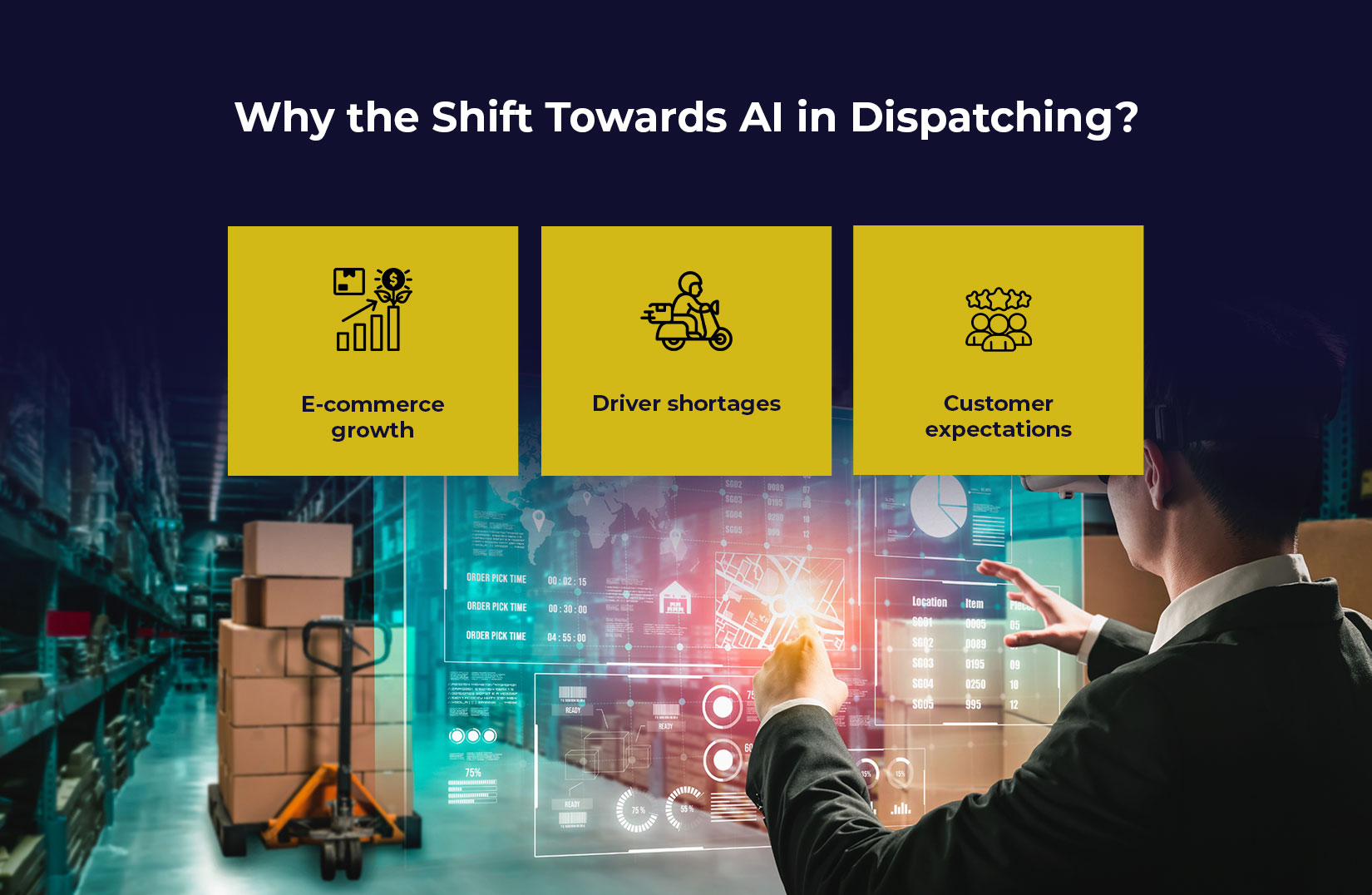
The Rise of Autonomous Dispatching: AI and the Future of Logistics
The logistics industry is on the brink of a revolution. As supply chains grow increasingly complex, traditional methods of managing deliveries, fleet movements, and personnel are becoming obsolete. Enter autonomous dispatching- a technological evolution powered by artificial intelligence (AI) that is transforming how businesses plan, assign, and manage logistics operations. At the core of this transformation lies a vital tool: dispatch scheduling software.
What is Autonomous Dispatching?
Autonomous dispatching refers to the use of AI algorithms to automate the assignment of deliveries, drivers, and routes in real-time. This system removes the need for manual intervention and allows logistics operations to run more efficiently. Leading to fewer delays and better resource allocation. The integration of AI, machine learning, and predictive analytics makes these systems smart enough to adapt to changes. Changes from traffic conditions to customer preferences, all in milliseconds.
According to a report by McKinsey, AI-enabled supply chains can reduce logistics costs by 15% and improve service levels by 65%. These numbers point to a significant competitive advantage for companies that embrace AI-based solutions early.
The Role of Dispatch Scheduling Software
At the heart of autonomous dispatching is dispatch scheduling software. This software allows companies to automate task assignment, track vehicle status, and optimize delivery windows with the help of AI. Businesses leveraging such tools experience improved delivery accuracy, reduced operational costs, and enhanced customer satisfaction.
Top-tier systems today provide advanced route planning, real-time tracking, and predictive alerts. They also allow integration with other logistics tools, ensuring end-to-end visibility. The best dispatch scheduling software is capable of learning from historical data, continuously improving decisions, and scaling effortlessly as operations grow.
Why the Shift Towards AI in Dispatching?

The logistics industry is being reshaped by several global trends:
1. E-commerce Growth:
With online retail sales projected to surpass $6.3 trillion globally by 2025, logistics providers must handle a growing volume of last-mile deliveries. This surge in demand necessitates faster, more accurate dispatching — something manual systems struggle to deliver.
2. Driver Shortages:
The American Trucking Associations estimate a shortage of over 80,000 drivers in the U.S. alone. With fewer drivers available, it becomes crucial to optimize their schedules and routes efficiently. AI-powered tools ensure every available resource is utilized to its fullest potential.
3. Customer Expectations:
Same-day and even one-hour deliveries are becoming the norm, especially in urban markets. Today’s customers expect precision, transparency, and flexibility. AI-driven tools can dynamically adjust to meet these expectations, ensuring on-time delivery with minimal disruption.
A robust dispatch scheduling system adapts to these challenges, making logistics operations smarter, faster, and more responsive to real-world variables.
Key Benefits of AI-Powered Dispatch Scheduling Software

1. Improved Efficiency:
AI reduces idle time, minimizes fuel consumption, and eliminates human error in route planning and task assignment. Automated systems ensure that deliveries are grouped logically, reducing the number of trips and distance traveled. This leads to better fleet utilization and faster turnaround times.
2. Scalability:
As demand grows, AI-powered dispatching can scale effortlessly without the need to hire additional dispatchers. Whether handling hundreds or thousands of orders per day, a dispatch scheduling system ensures consistent performance.
3. Real-Time Decision Making:
AI analyzes real-time inputs like traffic congestion, weather disruptions, or vehicle breakdowns. It adjusts routes and schedules on the fly, minimizing delays and optimizing delivery timelines.
4. Cost Savings:
Businesses report up to 20% savings in logistics costs by using AI-based dispatch scheduling software, thanks to route optimization, fewer failed deliveries, and better resource allocation.
5. Enhanced Customer Experience:
Accurate ETAs, live tracking, and timely updates foster trust and satisfaction, directly impacting customer loyalty.
Real-World Use Cases
Companies like Amazon and UPS are already leveraging AI to automate dispatching. For example, UPS’s ORION (On-Road Integrated Optimization and Navigation) system uses AI to reduce route miles and save millions of gallons of fuel each year.
Similarly, mid-sized logistics companies are adopting AI-powered dispatch scheduling software to compete with larger players. These systems provide real-time dashboards, intelligent driver assignments, and even customer communication modules – all in one platform.
The Future is Autonomous
Autonomous dispatching is no longer a futuristic concept. It’s happening now. As AI continues to evolve, we can expect even more sophisticated tools that anticipate problems before they happen and provide smart recommendations on the fly. Businesses that invest in a robust dispatch scheduling solution today are setting themselves up for long-term success.
From faster deliveries to lower costs and happier customers, the benefits of AI-driven logistics are undeniable. The age of manual dispatching is ending — and the age of intelligent, autonomous logistics has just begun.
Conclusion
AI-powered dispatch scheduling is reshaping logistics with speed, accuracy, and efficiency. As the industry evolves, embracing autonomous dispatching isn’t just an option — it’s a competitive necessity. Ready to future-proof your logistics operations? Explore LogiNext’s AI-driven dispatch scheduling software and take your delivery game to the next level. Click on the red button and book a demo today!
3







@LogiNext